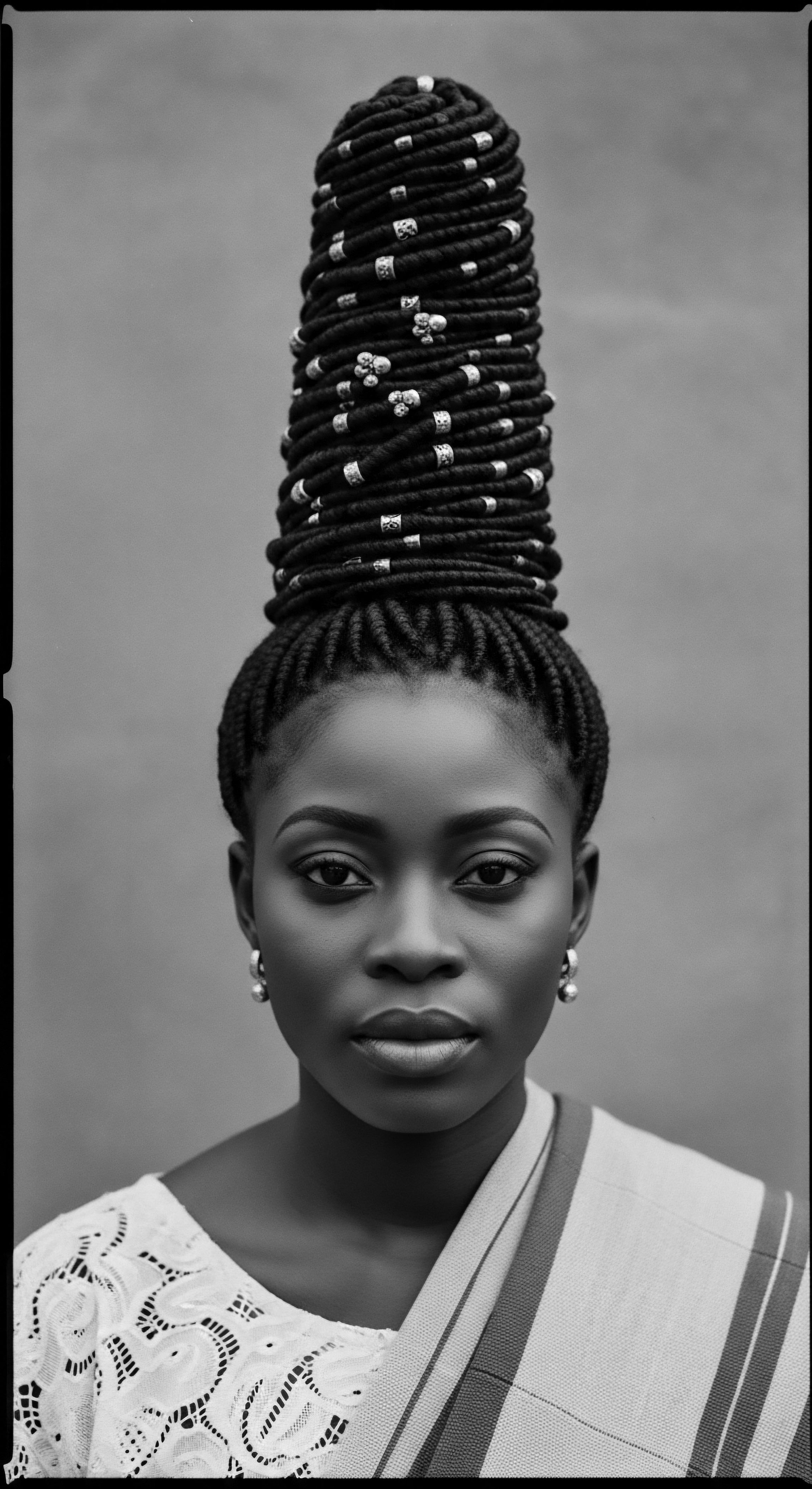
Fundamentals
The Ancient Roman Beauty, when considered through the discerning lens of heritage, unfolds as a intricate concept, extending far beyond superficial aesthetics. It represents a living understanding, a communal agreement on physical presentation and grooming that communicated wealth, social standing, and individual identity across a vast and varied empire. For Romans, the meticulous attention dedicated to one’s appearance was more than mere vanity; it served as a profound statement of belonging within a sophisticated civilization, a stark contrast to styles they perceived as less refined. This perception shaped practices, creating a cultural framework for outward expression.
Hair, in particular, held immense weight within this societal construct. Hairstyles were meticulously crafted, reflecting not only personal taste but also one’s position within the intricate Roman hierarchy. The creation of elaborate coiffures often demanded considerable time, signifying the wearer’s affluence and ability to employ skilled labor for such daily rituals. This deep engagement with hair care establishes a clear historical precedent for understanding its role in expressing selfhood and community connections, particularly for diverse hair textures that required specialized attention.
Ancient Roman Beauty was a sophisticated system of self-presentation where hair served as a central marker of status and identity, requiring significant investment of time and resources.
A key component of this beauty ideal was the careful manipulation of hair, a practice documented through a trove of archaeological discoveries, including combs, hairpins, and mirrors. These artifacts speak to the daily devotion given to coiffure, a testament to the societal importance placed on outward appearance. While modern perspectives might view such efforts as purely aesthetic, within the Roman context, this dedication to hair was interwoven with social customs and expectations, providing a historical mirror to the enduring significance of hair in self-expression, particularly within communities valuing ancestral care.

The Initial Glimpse of Adornment
Early Roman approaches to hair were relatively straightforward, though they always held a symbolic meaning. During the Roman Kingdom and Early Republic, men often wore their hair long with beards, reminiscent of Greek styles. This shifted around 300 BCE with the introduction of tonsors, or barbers, making short hair a customary choice for men.
The barbershop transformed into a social hub, where a young man’s inaugural shave was often a communal celebration marking his transition to manhood. This communal aspect of grooming offers an initial parallel to the shared experiences of hair care within many Black and mixed-race communities, where styling is often a collective, bonding activity.
Women’s hair, during the Republican period, was generally arranged simply, often parted in the middle with a bun at the nape or on top of the head. These early styles, while less ostentatious, still communicated respectability and adherence to societal norms. It is a fundamental aspect of understanding that the simple acts of managing and presenting one’s hair carried silent yet potent messages regarding social adherence and personal standing.
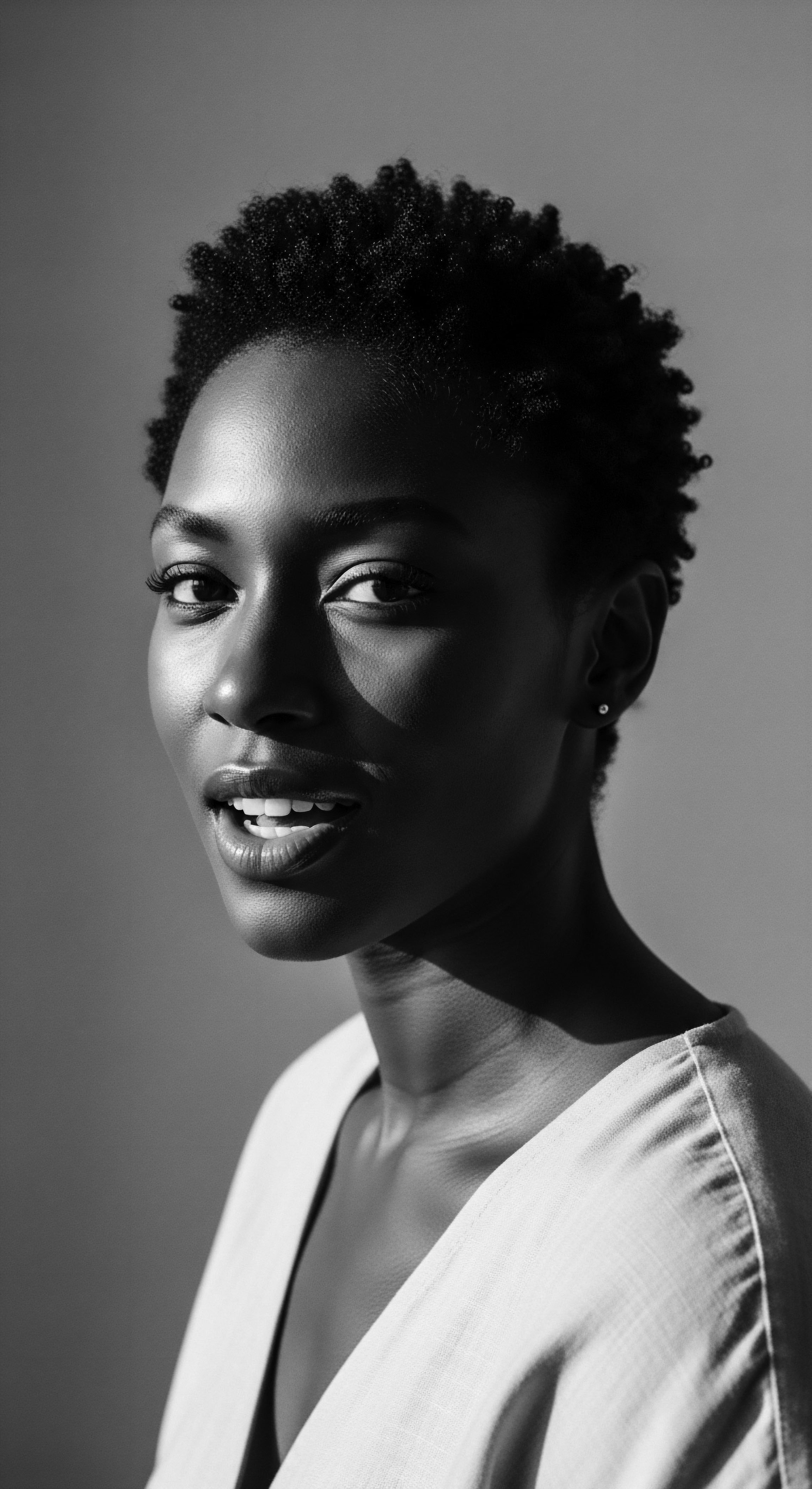
Intermediate
Moving beyond the foundational tenets, the concept of Ancient Roman Beauty acquires deeper dimensions, revealing a sophisticated intersection of social aspiration, material culture, and prevailing worldviews. The visual expression of beauty in Rome, especially through hair, was dynamically evolving, adapting to political shifts and the personal inclinations of imperial figures. Understanding this evolution requires a more nuanced approach, recognizing that beauty was not a static ideal but a fluid construct, deeply tethered to power, identity, and the expansive reach of the Roman Empire. The connotation of wealth through elaborate styles is clear ❉ the more complex a hairstyle, the more time and resources it demanded, thus signaling the wearer’s elevated social standing.
Within this framework, the very texture of hair carried implicit meanings. A “natural” style was often associated with “barbarians,” groups Romans viewed as lacking the cultural sophistication and economic means to create the elaborate coiffures favored by the elite. This historical preference for manipulated, “unnatural” hair styles for those in positions of prominence casts a long shadow, echoing later societal pressures on textured hair in various diasporic communities. It prompts contemplation on how this historical prejudice against “natural” appearances might have contributed to the devaluation of diverse hair types within the empire’s vast domain, subtly influencing perceptions and practices for centuries.

The Tools and Techniques of Roman Hair Dressing
The daily ritual of hair dressing in Rome was a complex endeavor, particularly for aristocratic women. Enslaved female hairdressers, known as Ornatrices, were highly valued for their skill in creating the intricate styles of the day. These artisans employed a range of tools and substances to achieve the desired effects ❉
- Calamistra ❉ Bronze rods, often heated in hot ashes or open flames, were used to curl hair into ringlets, a method that created dramatic, sculpted forms. This application of heat, while effective, underscores the lengths to which Romans would go for desired aesthetics, a practice that sometimes led to hair damage.
- Hairpins and Nets ❉ Ornate hairpins, fashioned from ivory, silver, gold, or even jewels, served to secure elaborate buns and braids. Finely woven gold nets, called Reticulae, also kept styles in place, reflecting the luxury and preciousness attributed to hair adornment.
- Oils and Unguents ❉ To add luster and manageability, various oils, tonics, and unguents were applied to the hair. These preparations, often derived from natural sources, represent an early form of hair conditioning, aimed at enhancing the hair’s visual appeal and texture.
Wigs and hairpieces were also common, serving diverse purposes, from disguising baldness to adding volume and height for fashionable, towering coiffures. The materials for these wigs were sourced from far-reaching corners of the empire; blonde hair from Germany and black hair from India were particularly prized, reflecting the diverse origins of people within the Roman sphere. This trade in hair, a commodity of beauty, further demonstrates the cosmopolitan nature of Roman society and its engagement with diverse human populations.
Roman haircare, facilitated by skilled enslaved artisans, involved a sophisticated array of tools, heat, and imported materials, showcasing a societal preference for manipulated styles over natural forms.
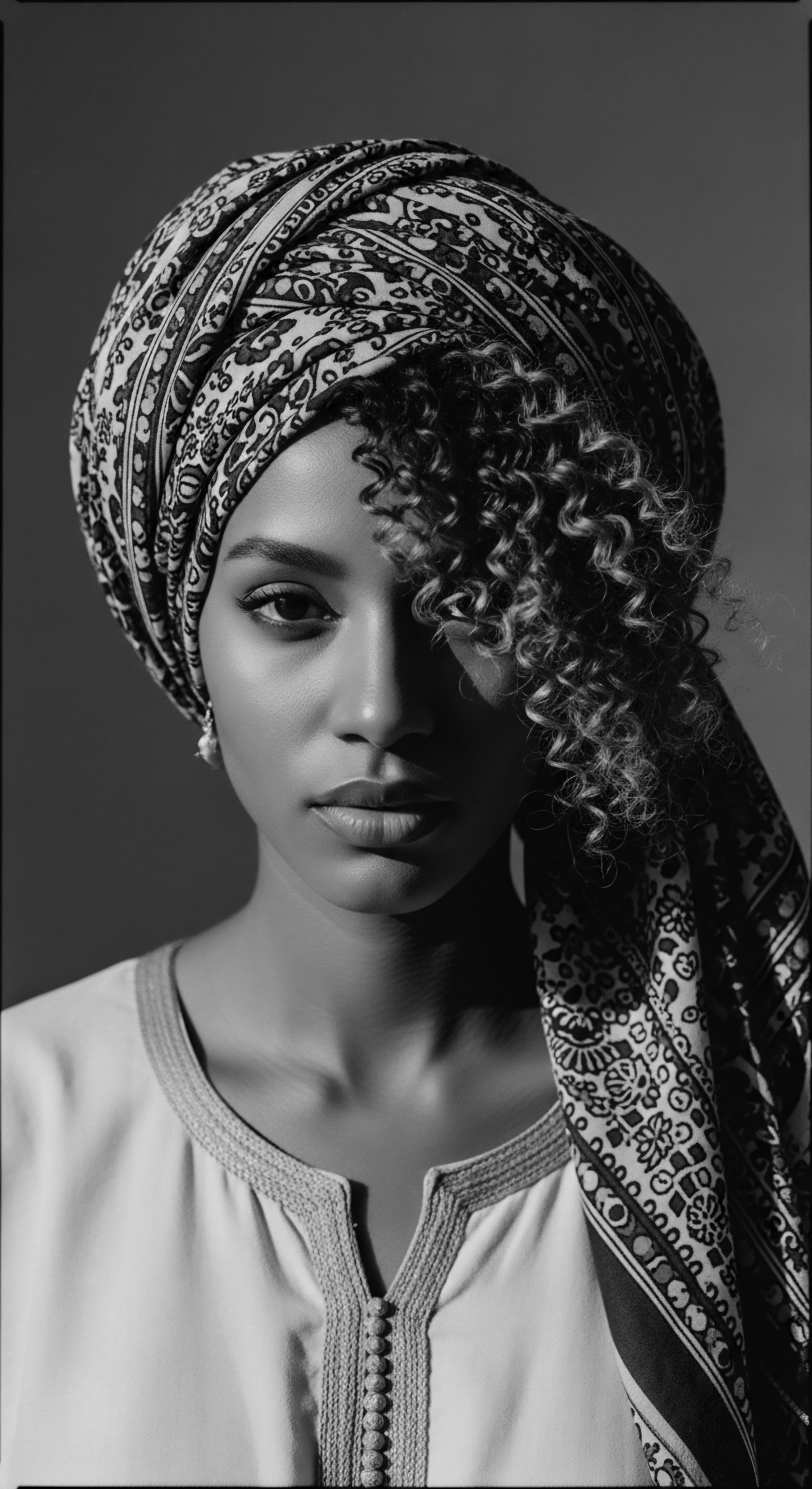
The Meaning of Color in Roman Hair
The alteration of natural hair color held particular significance. While Greeks often preferred lighter hair, Romans generally favored darker shades, though blonde was also sought after, especially as a symbol of spoils of war, taken from Germanic captives. The process of dyeing hair was often harsh, involving ingredients like leeches rotted in red wine for black dye, or pigeon dung for lightening. This willingness to endure discomfort and even potential harm for the sake of perceived beauty highlights the profound societal pressure to conform to specific aesthetic standards.
This pursuit of altered hair color intersects with our understanding of textured hair heritage. While the specific outcomes of these dyes on different hair types are not always explicitly detailed in historical texts, the underlying principle of manipulating natural appearance for social standing is a recurrent theme across cultures. For individuals with naturally dark, textured hair, the desire or pressure to lighten their strands, or to achieve a uniform shade, could be seen as an early iteration of aesthetic assimilation, predating more modern forms of Eurocentric beauty imposition within Black and mixed-race communities. The societal emphasis on specific hair colors or styles during this period created a template where natural variations might be deemphasized or altered to fit prevailing trends.
| Ancient Roman Dye Source Leeches & Red Wine |
| Traditional Application/Purpose Black hair dye, fermented for days, applied to darken hair. |
| Connection to Hair Science (Eumelanin) A harsh method, likely interacting with hair’s protein structure to create a dark deposit. Natural black hair color is a result of higher concentrations of eumelanin pigments. |
| Ancient Roman Dye Source Pigeon Dung |
| Traditional Application/Purpose Used to lighten hair, potentially through chemical reaction or bleaching properties. |
| Connection to Hair Science (Eumelanin) Chemical processes to lighten hair target the degradation of natural melanin. This ancient practice, though crude, sought to alter the inherent eumelanin and pheomelanin balance. |
| Ancient Roman Dye Source Henna |
| Traditional Application/Purpose Reddish-brown plant-based dye, used for darkening and thickening hair. |
| Connection to Hair Science (Eumelanin) Henna coats the hair shaft, adding color without fundamentally altering melanin structure. Its historical use across North Africa and the Middle East offers a link to ancestral natural hair care practices. |
| Ancient Roman Dye Source Gold Powder |
| Traditional Application/Purpose Sprinkled on hair by the wealthy for a shimmering effect, indicating opulence. |
| Connection to Hair Science (Eumelanin) Purely cosmetic, an additive. This practice speaks to superficial adornment rather than chemical alteration of hair's natural pigments (eumelanin, pheomelanin), highlighting the pursuit of visual extravagance. |
| Ancient Roman Dye Source These ancient practices illustrate a persistent human desire to modify hair color, often predating a scientific understanding of melanin, yet laying groundwork for modern insights into hair pigmentation and structural change. |
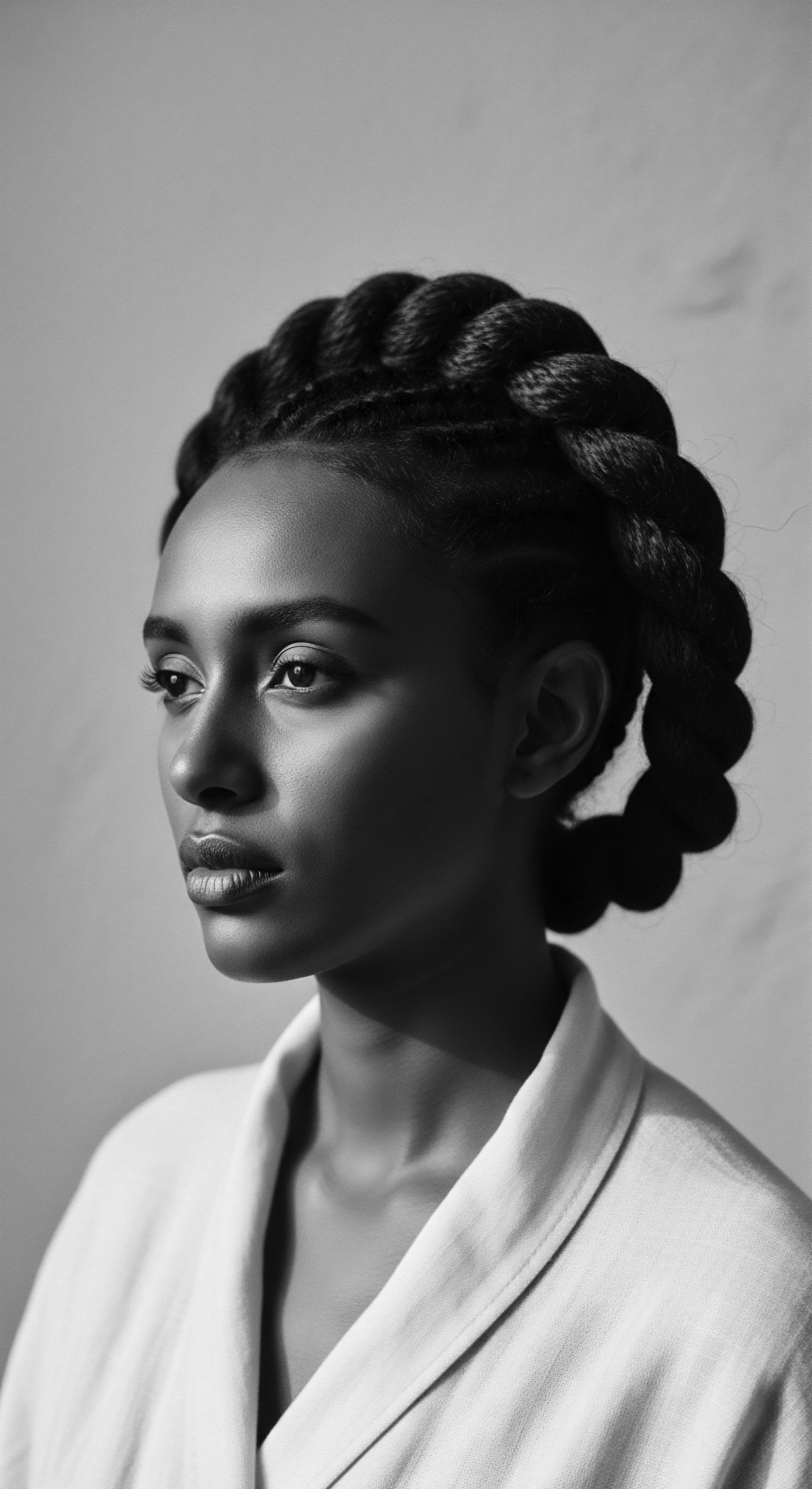
Academic
The academic elucidation of Ancient Roman Beauty compels us to move beyond a simplistic aesthetic appreciation, demanding an inquiry into its intricate social, political, and material dimensions. At its core, the Definition of Ancient Roman Beauty represents a complex interplay of cultivated appearances, status markers, and prevailing cultural narratives, meticulously shaped through daily rituals and material investments. This is a concept where the visual expression of the self became a public declaration of one’s place within the societal fabric, often dictating how individuals were perceived and integrated into the empire’s vast tapestry of identities. Its Meaning is not merely about attractiveness; it signifies adherence to established social hierarchies, economic power, and a commitment to Roman cultural norms, extending its influence to every aspect of personal presentation, particularly hair.
The Interpretation of Ancient Roman Beauty, especially when viewed through the lens of textured hair heritage, reveals a compelling, often overlooked, aspect of its global reach. The Roman Empire, at its zenith, spanned three continents, incorporating diverse populations with a myriad of skin tones and hair textures. While classical scholarship has sometimes “whitewashed” this historical reality, archaeological findings and literary accounts confirm the presence of people with varied ethnic backgrounds, including those from North and Sub-Saharan Africa. This historical reality necessitates a re-evaluation of how “beauty” was conceptualized and applied across such a heterogeneous empire, particularly in relation to hair, a potent symbol of identity.
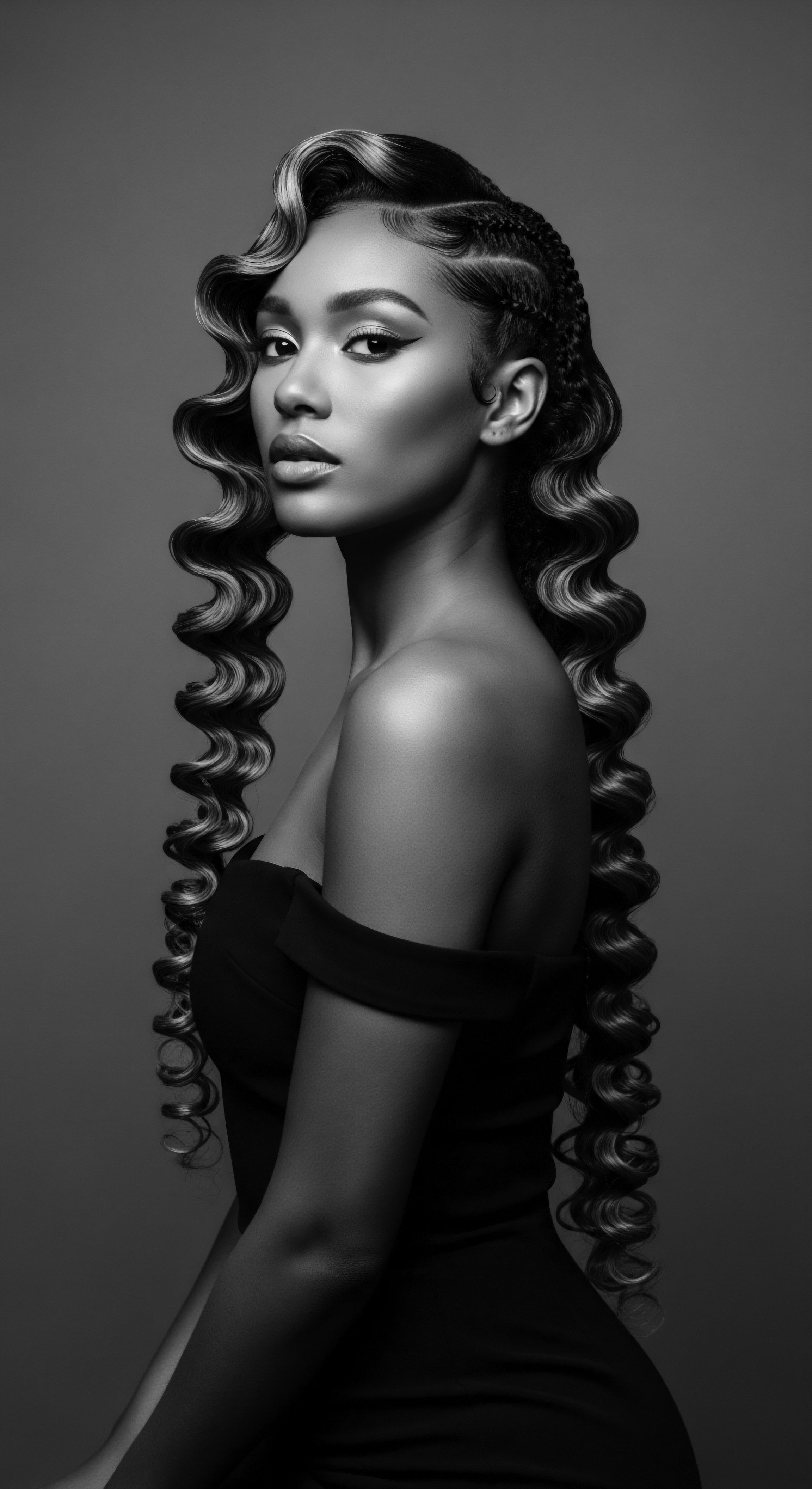
Echoes from the Source ❉ Hair Biology and Ancient Practices
Hair, at its elemental biological level, is a complex protein filament, its diverse forms shaped by genetic inheritance and environmental factors. The variations in hair texture—from straight to tightly coiled—are determined by the shape of the hair follicle and the distribution of keratins within the hair shaft. Tightly coiled hair, prevalent in many African and diasporic communities, tends to be more delicate and requires specific moisture retention strategies due to its many twists and turns, which impede natural oil distribution.
Ancient Romans, though lacking a scientific understanding of cellular biology, certainly understood the practicalities of different hair types. Their use of oils and unguents, some containing animal and vegetable fats, aimed to make hair “soft and lustrous” and more “manageable”, suggesting an intuitive understanding of the need for hydration, which would have been particularly beneficial for textured hair.
This practical knowledge is a testament to ancestral wisdom, passed down through generations, often without formal scientific frameworks. The very act of styling, whether coiling, braiding, or tying with ribbons, reflects an engagement with the hair’s natural inclination while seeking to impose a desired form. This deep connection to the material properties of hair, even in an ancient context, highlights a continuous thread of care that spans millennia, linking elemental biology to the tender practices of human hands.
Ancient Roman beauty practices, rooted in practical hair manipulation and adornment, offer a historical echo of ancestral wisdom in caring for diverse hair textures.
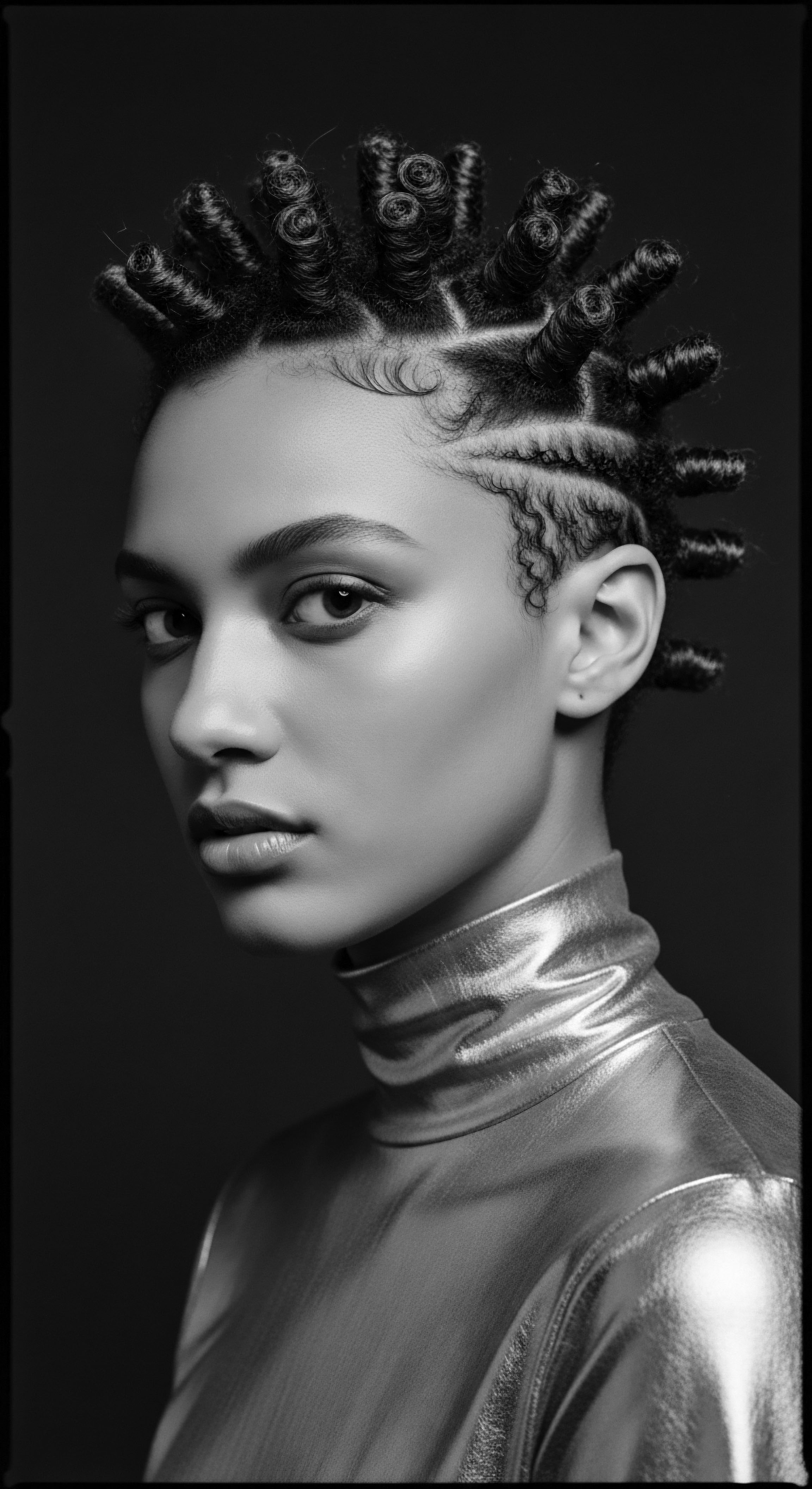
The Tender Thread ❉ Ancestral Practices and Community
The cultivation of beauty in Ancient Rome was often a communal and domestic affair, particularly for women. The Ornatrix, an enslaved female hairdresser, played a central role in the daily beautification rituals of wealthy Roman women. This relationship, while rooted in forced labor, nevertheless represents an intimate space where hair care techniques, product knowledge, and aesthetic standards were transmitted and applied.
These enslaved individuals were skilled artisans, their hands performing complex tasks that transformed hair into intricate sculptures, signaling their mistresses’ societal position. The presence of such specialized labor underscores the high societal Value placed on elaborate hairstyles, elevating them beyond mere personal preference to a public demonstration of power and status.
This dynamic resonates with the historical experience of Black and mixed-race hair traditions, where hair care has profoundly been a community-based activity, often performed within families or among trusted artisans. Consider the cornrow, an ancient African styling technique that serves as a powerful testament to communal care and heritage. Historically, cornrows were not just aesthetic expressions; they were intricate forms of communication, sometimes even serving as maps for escape during the transatlantic slave trade. This practice, dating back thousands of years in African civilizations where hair was revered as a symbol of identity and spirituality, provides a compelling case study.
While the context differs significantly from the Roman elite and their enslaved hairdressers, the fundamental notion of hair as a medium for communal expression, identity, and practical communication remains a potent parallel. The expertise of the Ornatrix, in this light, can be seen as a historical precursor to the specialized knowledge within Black hair communities, where specific techniques are passed down and honed to care for and adorn textured strands.
The archaeological record, though limited in direct organic remains of hair, offers insight into the tools used—combs, pins, and curling irons, suggesting a range of manipulations were applied. For individuals with naturally textured hair within the Roman Empire, these tools would have been used in ways that either celebrated their hair’s natural form or sought to alter it to conform to dominant trends. Historical accounts indicate that “textured hair was prevalent and would have been easy to shape into corkscrew curls, finger waves, and braids”.
This suggests that despite the emphasis on Romanized ideals, the inherent properties of textured hair allowed for versatility and adaptation, often lending themselves to the desired intricate curls that characterized many elite Roman hairstyles. The presence of individuals with various hair types within the empire means that the Application of these beauty standards was not uniform; rather, it was adapted and negotiated based on the natural characteristics of one’s hair.

A Case Study ❉ Septimius Severus and the Unbound Helix of Identity
The very Essence of Ancient Roman Beauty, particularly its intersection with diverse identities, is powerfully exemplified by Emperor Septimius Severus (reigned 193-211 CE). Born in Leptis Magna, a city in modern-day Libya, Severus was a North African who rose to the highest echelons of Roman power. His physical presentation, especially his hair, offers a unique historical counter-narrative to any monolithic perception of Roman aesthetics.
Severus was often depicted with thick, tightly curled hair and a beard, a visual characteristic that historians identify as an indicator of his African heritage. This specific hairstyle was not a deviation from imperial ideals but a deliberate strategic choice, a “callback” to the deified Emperor Marcus Aurelius, who sported a similar appearance.
The widespread acceptance of Severus’s textured hair and beard within imperial portraiture represents a profound moment in the history of Roman beauty and identity. It signifies that, for a period, a hairstyle associated with African ethnicity could be not only tolerated but actively appropriated and celebrated as a symbol of authority and connection to a respected imperial lineage. This was a powerful form of public relations, effectively conveying a message that resonated across the empire and contributed to his legitimacy.
The Significance of this historical example cannot be overstated ❉ it demonstrates that the “Roman look” was far more adaptable and racially inclusive than often portrayed in popular imagination. It illustrates how the “unbound helix” of identity, particularly through hair, could voice a powerful message and shape perceptions of leadership.
- Ethnic Affirmation ❉ Severus’s textured hair affirmed his North African origins, yet it was presented in a manner that aligned with Roman imperial iconography, demonstrating a complex integration of identity.
- Imperial Propaganda ❉ His hairstyle served as a deliberate visual link to a revered predecessor, showcasing continuity and divine association, effectively legitimizing his reign.
- Societal Acceptance ❉ The broad acceptance of his image throughout the empire implies a societal framework that could, at least in certain contexts, accommodate and even elevate diverse physical characteristics, challenging later, more rigid racial categorizations.
The example of Septimius Severus starkly contrasts with the earlier association of “natural” styles with “barbarians”. His image, widely disseminated through coinage and statuary, served as a public Statement that tightly coiled hair could be a marker of power, wisdom, and Roman legitimacy, rather than a sign of uncivilized origins. This case study underscores the fluidity of Roman beauty standards and their capacity to incorporate, or even valorize, the aesthetic expressions of diverse ethnic groups within the empire. It offers a counterpoint to the later historical narratives that often marginalized textured hair, reminding us of a period where its visual presence could be a powerful assertion of a leader’s heritage and authority.
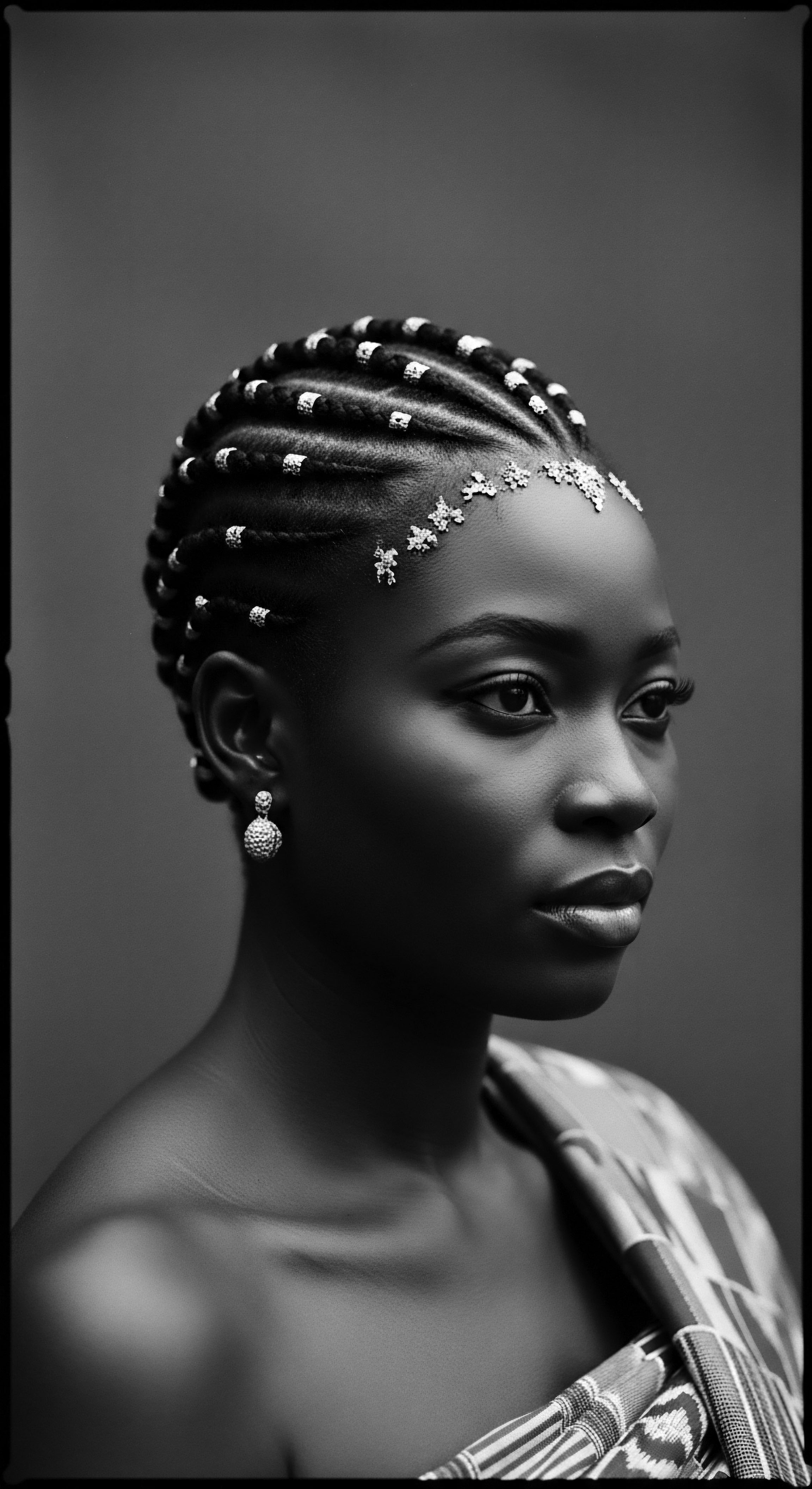
Reflection on the Heritage of Ancient Roman Beauty
As we consider the multifaceted understanding of Ancient Roman Beauty, particularly through the lens of textured hair, a profound appreciation emerges for the enduring echoes of ancestral practices. This historical survey reveals that beauty, in any era, is never a singular, unchanging ideal, but a vibrant dialogue between personal expression, societal aspiration, and available resources. From the careful crafting by enslaved Ornatrices to the strategic styling of emperors like Septimius Severus, hair consistently held a central place in articulating identity, status, and cultural belonging. Its journey through time, from elemental biology to an artistic canvas, is a testament to its powerful communicative capacity.
The insights gathered from Roman practices—the intricate braiding, the thoughtful application of oils, the symbolic weight of wigs—resonate deeply with the rich heritage of Black and mixed-race hair traditions. These historical threads connect ancient ingenuity to contemporary practices of self-care and communal affirmation. Our exploration confirms that textured hair, far from being an anomaly, has always been part of the human story of beauty and self-presentation, adapted and celebrated in diverse ways across civilizations. The wisdom of those who managed and adorned hair in Ancient Rome, often under challenging circumstances, forms an unbroken chain of knowledge that continues to inform and inspire our modern understanding of hair wellness and cultural pride.
Ultimately, the investigation into Ancient Roman Beauty, interpreted through a heritage-informed perspective, invites a deeper connection to our own hair stories. It prompts us to recognize that the pursuit of beauty, in its most authentic sense, is a journey of self-acceptance and a celebration of ancestral legacies. Each strand carries the memory of practices, resilience, and identity, reinforcing the profound truth that our hair is a living, breathing archive of who we are and where we come from. This understanding not only broadens our historical view but also strengthens our contemporary resolve to honor and preserve the unique narratives woven into every coil and curl.
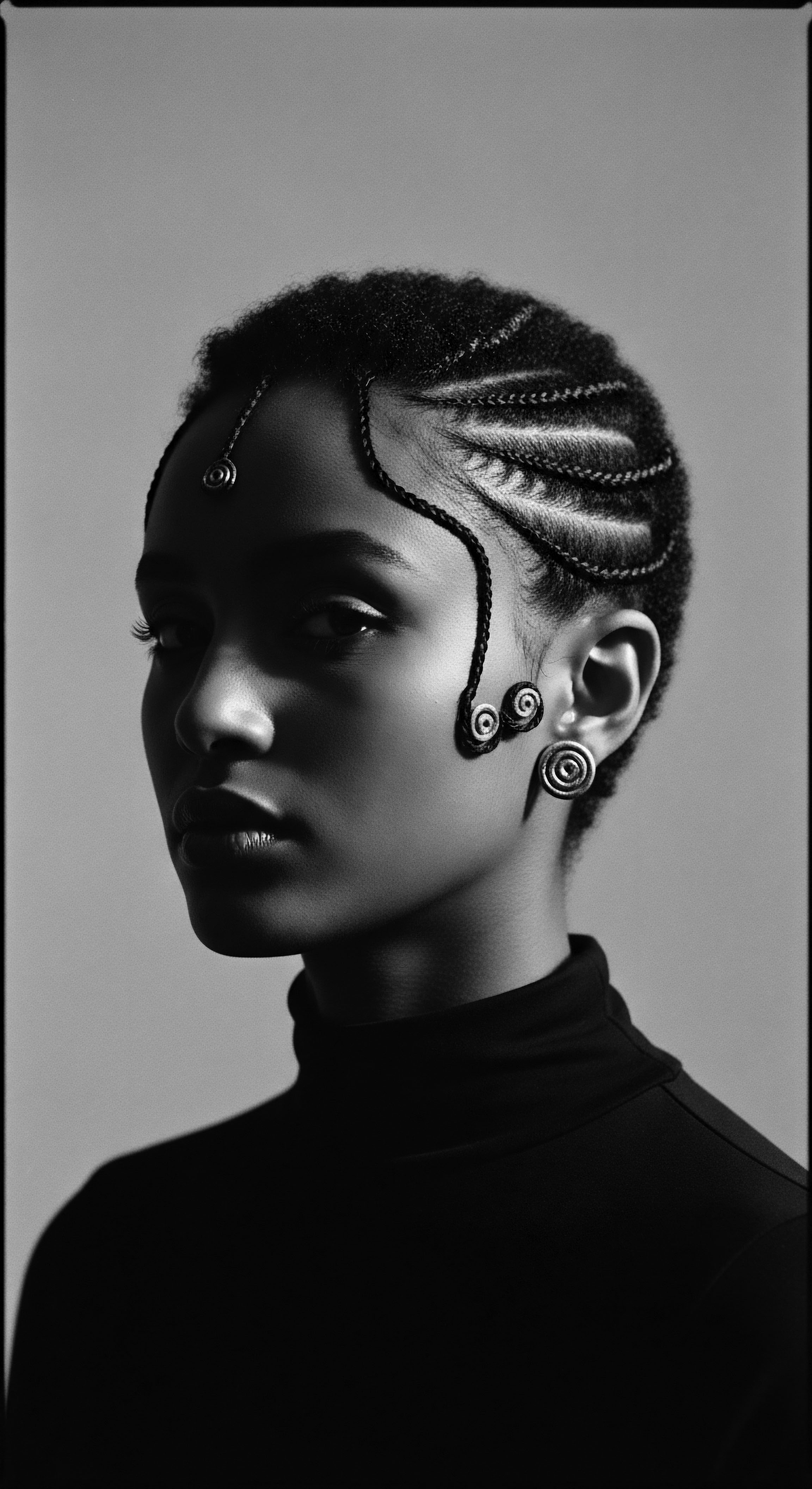
References
- Bartman, Elizabeth. “Hair and the Artifice of Roman Female Adornment.” American Journal of Archaeology, vol. 105, no. 1, 2001, pp. 1-25.
- Boorstin, Daniel J. The Creators ❉ A History of Heroes of the Imagination. Vintage Books, 1992.
- McClees, Helen. The Daily Life of the Greeks and Romans. Gilliss Press, 1924.
- Ovid. Ars Amatoria .
- Pandey, Nandini B. “An Empire of Many Colours? Race and Imperialism in Ancient Rome.” OUPblog, 2021.
- Pliny the Elder. Natural History .
- Snowden, Frank M. Jr. Before Color Prejudice ❉ The Ancient View of Blacks. Harvard University Press, 1983.
- Stephens, Janet. “Ancient Roman Hairdressing ❉ On (Hair)pins and Needles.” Journal of Roman Archaeology, vol. 21, no. 1, 2008, pp. 110-132.
